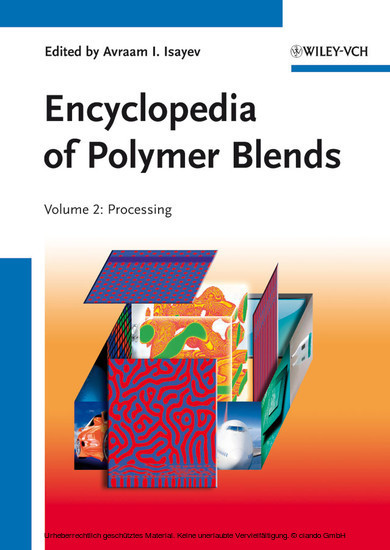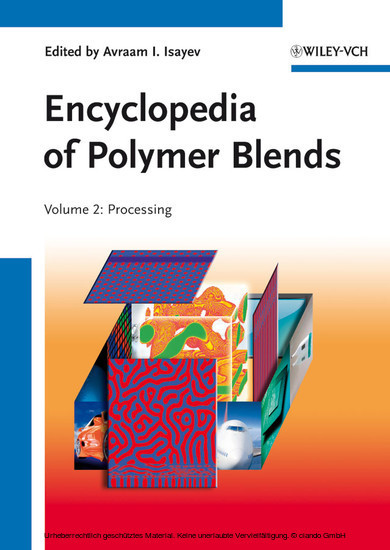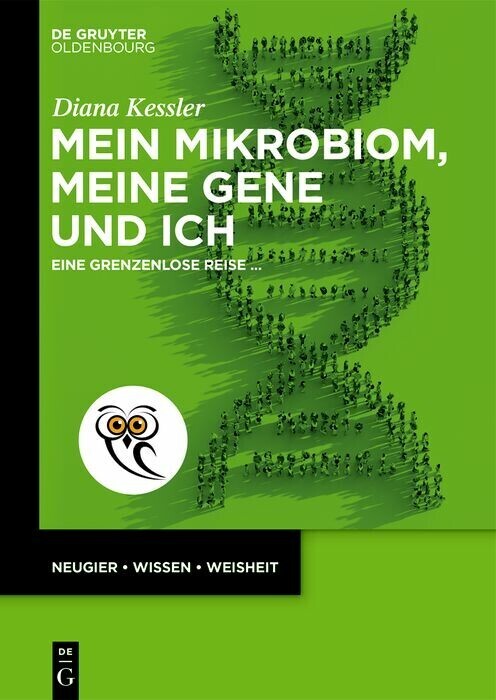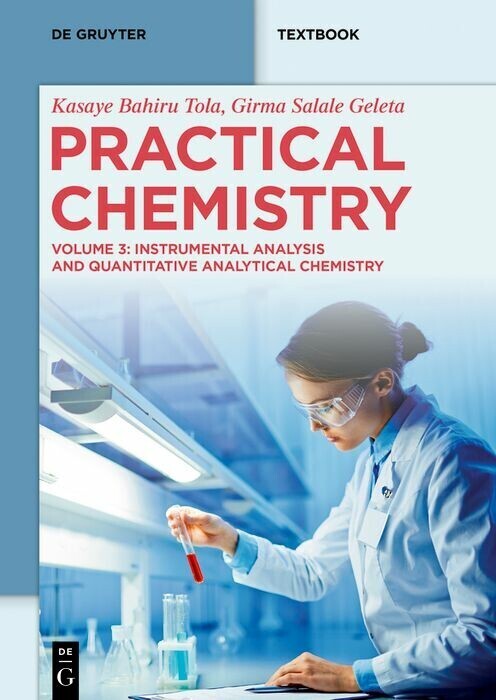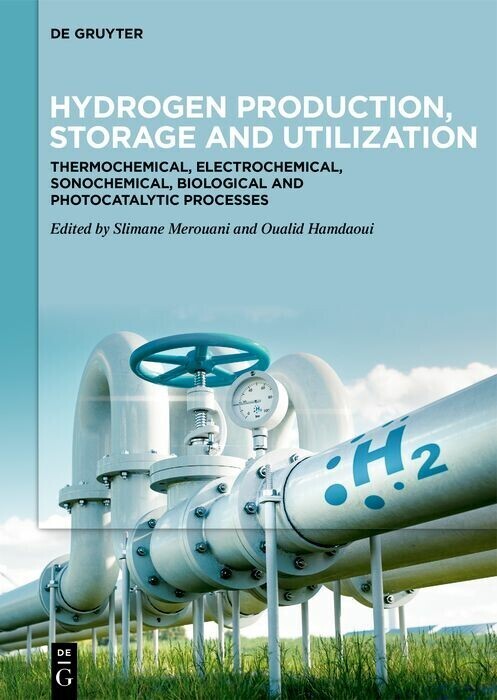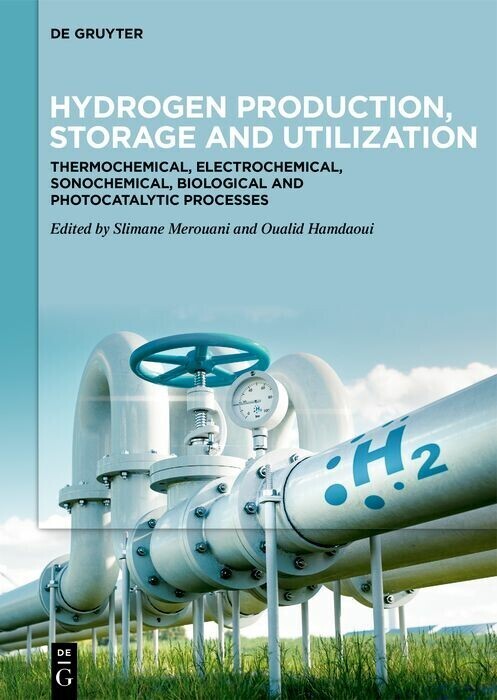Encyclopedia of Polymer Blends, Volume 2
Processing
A complete and timely overview of the topic, this volume imparts knowledge of fundamental principles and their applications for academicians, scientists and researchers, while informing engineers, industrialists and entrepreneurs of the current state of the technology and its utilization.
Each article is uniformly structured for easy navigation, containing the latest research & development and its basic principles and applications, examples of case studies, laboratory and pilot plant experiments, as well as due reference to the published and patented literature.
Avraam I. Isayev is a Distinguished Professor of Polymer Engineering at the University of Akron. He is a native of Azerbaijan. He received M.Sc. degrees from the Azerbaijan Institute of Oil and Chemistry in Chemical Engineering and the Moscow Institute of Electronic Machine Building in Applied Mathematics and a Ph.D. in Polymer Engineering and Science from the Institute of Petrochemical Synthesis of the USSR Academy of Sciences, Moscow. Before joining the University of Akron in 1983 as an Associate Professor, he was a Senior Research Associate at Cornell University, a Senior Research Fellow at Technion and a Research Associate at the Institute of Petrochemical Synthesis of the USSR Academy of Sciences. He has edited 5 books, published 1 monograph and over 220 journal papers, many book chapters and encyclopedia articles. He has received numerous awards.
Each article is uniformly structured for easy navigation, containing the latest research & development and its basic principles and applications, examples of case studies, laboratory and pilot plant experiments, as well as due reference to the published and patented literature.
Avraam I. Isayev is a Distinguished Professor of Polymer Engineering at the University of Akron. He is a native of Azerbaijan. He received M.Sc. degrees from the Azerbaijan Institute of Oil and Chemistry in Chemical Engineering and the Moscow Institute of Electronic Machine Building in Applied Mathematics and a Ph.D. in Polymer Engineering and Science from the Institute of Petrochemical Synthesis of the USSR Academy of Sciences, Moscow. Before joining the University of Akron in 1983 as an Associate Professor, he was a Senior Research Associate at Cornell University, a Senior Research Fellow at Technion and a Research Associate at the Institute of Petrochemical Synthesis of the USSR Academy of Sciences. He has edited 5 books, published 1 monograph and over 220 journal papers, many book chapters and encyclopedia articles. He has received numerous awards.
1;Encyclopedia of Polymer Blends;1 1.1;Contents;7 1.2;Preface;15 1.3;List of Contributors;19 1.4;1: Polymer Blend Compounding and Processing;21 1.4.1;1.1 Introduction and Early Studies of Blending;21 1.4.2;1.2 Methods of Compounding;22 1.4.2.1;1.2.1 Batch Mixers;22 1.4.2.1.1;1.2.1.1 Introductory;22 1.4.2.1.2;1.2.1.2 Non-intermeshing Rotor Mixers;23 1.4.2.1.3;1.2.1.3 Intermeshing Rotor Mixers;25 1.4.2.1.4;1.2.1.4 Post-World War II Development;27 1.4.2.2;1.2.2 Continuous Mixers;30 1.4.2.2.1;1.2.2.1 Early Activities;30 1.4.2.2.2;1.2.2.2 Single-Screw Extrusion;31 1.4.2.2.3;1.2.2.3 Co-rotating Twin-Screw Extrusion;31 1.4.2.2.4;1.2.2.4 Tangential Counter-Rotating Twin-Screw Extrusion;35 1.4.2.2.5;1.2.2.5 Modular Intermeshing Counter-Rotating Twin-Screw Mixer;36 1.4.2.2.6;1.2.2.6 Modular Buss Kokneter;36 1.4.2.3;1.2.3 Comparisons;36 1.4.3;1.3 Processing Polymer Blends;38 1.4.3.1;1.3.1 Early Synthetic Polymer Blends;38 1.4.3.2;1.3.2 General Ideas and Stability of Blend Phase Morphology;38 1.4.3.3;1.3.3 Phase Morphology Variations in Processing Operations;41 1.4.3.3.1;1.3.3.1 Melt Spinning;41 1.4.3.3.2;1.3.3.2 Die Extrusion;41 1.4.3.3.3;1.3.3.3 Injection Molding;42 1.4.4;References;43 1.5;2: Rheology of Polymer Blends;47 1.5.1;2.1 Introduction;47 1.5.1.1;2.1.1 Rheological Models for Miscible Blends;48 1.5.1.1.1;2.1.1.1 Solutions;48 1.5.1.1.2;2.1.1.2 Homologous Polymer Blends;51 1.5.1.2;2.1.2 Model Systems for Immiscible Blends;51 1.5.1.2.1;2.1.2.1 Interphase and Percolation;51 1.5.1.2.2;2.1.2.2 Suspensions;54 1.5.1.2.3;2.1.2.3 Emulsion Rheology;59 1.5.1.2.4;2.1.2.4 Melt Flow of Block Copolymers;65 1.5.2;2.2 Theoretical Treatment of Polymer Blends;65 1.5.3;2.3 Rheology of Miscible Blends;67 1.5.3.1;2.3.1 General;67 1.5.3.2;2.3.2 Phase Separation and Flow;72 1.5.3.2.1;2.3.2.1 Influence of Thermodynamics on Rheology;72 1.5.3.2.2;2.3.2.2 Influence of Rheology on Thermodynamics;74 1.5.4;2.4 Rheology of Immiscible Blends;77 1.5.4.1;2.4.1 Rheological Equations of State;77 1.5.4.2;2.4.2 Morphology of Immiscible Blends;80 1.5.4.3;2.4.3 Microrheology of Polymer Blends;81 1.5.4.3.1;2.4.3.1 Deformation and Breakup of Viscoelastic Drops;81 1.5.4.3.2;2.4.3.2 Coalescence of Viscoelastic Drops;83 1.5.4.4;2.4.4 Flow Imposed Morphology;85 1.5.4.5;2.4.5 Shear Flows;86 1.5.4.5.1;2.4.5.1 Concentration Dependence of Viscosity;86 1.5.4.5.2;2.4.5.2 Dynamic Flow;88 1.5.4.5.3;2.4.5.3 Steady-State versus Dynamic Viscosity;89 1.5.4.5.4;2.4.5.4 Blend Elasticity;90 1.5.4.6;2.4.6 Elongational Flows;92 1.5.5;2.5 Rheology of Blends with Nanoparticles;96 1.5.5.1;2.5.1 General;96 1.5.5.2;2.5.2 Rheology of Blends with Spherical SiO2 Particles;98 1.5.5.3;2.5.3 Rheology of Blends with Nanoparticles Near Binodal;100 1.5.5.4;2.5.4 Rheology of Immiscible Blends with Organoclay;101 1.5.6;2.6 Conclusions;103 1.5.7;References;109 1.6;3: Compounding and Processing of Plastic/Rubber Blends;129 1.6.1;3.1 Plastic/Rubber Blends;129 1.6.1.1;3.1.1 Introduction;129 1.6.1.2;3.1.2 Classification of Polymer Blends;130 1.6.1.3;3.1.3 Types of Plastic/Rubber Blends;131 1.6.2;3.2 Methods of Blend Preparation;132 1.6.3;3.3 Equipment for Blend Preparation by Melt Mixing of Polymers;133 1.6.3.1;3.3.1 Batch Mixers;133 1.6.3.1.1;3.3.1.1 Roll Mill;133 1.6.3.1.2;3.3.1.2 Banbury or Kneader Mixer;134 1.6.3.2;3.3.2 Continuous Mixers;137 1.6.3.2.1;3.3.2.1 Twin-Screw Mixer;137 1.6.3.2.2;3.3.2.2 Buss Continuous Kneader;143 1.6.4;3.4 Preparation of Physical Blends of Plastics and Rubbers;145 1.6.4.1;3.4.1 Laboratory Preparation of the Blends;145 1.6.4.2;3.4.2 Production of Blends by a Batch Process;147 1.6.4.3;3.4.3 Production of Blends by a Continuous Process in a Twin-Screw Mixer;148 1.6.5;3.5 Crosslinking Agents and Crosslinking Processes;151 1.6.6;3.6 Preparation of the Blends of Plastics and Crosslinked Rubbers;157 1.6.6.1;3.6.1 Preparation of Plastic and Crosslinked Rubber Blends (TPVs) by a Batch Process;160 1.6.6.1.1;3.6.1.1 Preparation of TPVs in a Brabender;160 1.6.6.1.2;3.6.1.2 Production of TPVs
Isayev, Avraam I.
| ISBN | 9783527805228 |
|---|---|
| Artikelnummer | 9783527805228 |
| Medientyp | E-Book - PDF |
| Copyrightjahr | 2016 |
| Verlag | Wiley-VCH |
| Umfang | 422 Seiten |
| Sprache | Englisch |
| Kopierschutz | Adobe DRM |

